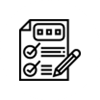As the healthcare industry moves toward a value-based paradigm, the healthcare environment is becoming increasingly complex with emerging market influencers. Rising healthcare costs and reforms are tilting the balance of power toward payers and provider networks.
Today, commercial success is no longer exclusively dependent on the amount of manufacturers’ sales forces that are actively targeting providers. Specifically, stakeholders are now focusing decision criteria on safety profiles, patient outcomes, and economic value, whereas sales-led detailing has relatively less influence.1
Consciously allocating analytics-supported resources can enable pharma companies to achieve brand success. Effective analytics and insights are necessary to understand and assess the impact of different stakeholders and to know the resources the company allocates to reach the right customer.
This blog highlights the shift in the pharma landscape. It offers a practical analytical approach that uses health care professional (HCP) scoring and segmentation based on payer and integrated delivery network (IDN) influences. As a result, this approach will improve call plans and help manufacturers maximize their sales operations’ return on investment (ROI).
![]() Learn More - The Evolution Of Pharmaceutical Call Planning
Learn More - The Evolution Of Pharmaceutical Call Planning
The Changing Pharma Landscape
In the changing landscape, prescription decisions are moving away from individual physicians, whereas they dominated decision-making in the old framework. Physicians who are IDN employees must adhere to formularies or justify their choice when they elect to use another product.
The managed care model has also seen massive growth in the US pharmaceutical industry. Gaining access to a managed care formulary is crucial for a product’s success. Therefore, manufacturers are providing payers higher rebates to secure a favorable formulary position.
However, formulary wins alone cannot ensure increases in net profits. On the contrary, net profits can reduce if the formulary wins and rebate increases do not materialize into expected gains in market shares. We can attribute this profit loss to a growing difference between a manufacturer’s list price for a drug and the net price to a third-party payer after rebates.
Learn More - "Driving Sales Rep Performance With Statistically Defined Incentive Plans"
In today’s competitive marketplace, practical analytical tools and insights must follow formulary wins to effectively assess the stakeholders’ influence levels, as well as the resources that companies allocate for reaching the right customers.
This conscious tactical selection can vastly improve the prospects’ chances for brand success. Sales representatives must receive timely information about which customers will be most affected or influenced. Then, they must appropriately prioritize their efforts and resources to pull through the opportunity in the best manner.
PHARMA Call Planning Explained
Before delving into modeling parameters, the framework, and the processes influencing managed care and health care systems, it is critical to understand how a typical call planning approach works.
Planning for success requires a tactical call planning strategy through effective platforms - such as Axtria SalesIQ™. This analytics-embedded cloud-based sales planning and operations platform powers commercial organizations to make data-driven decisions, properly align territories, and efficiently reach the right customers at the right time.

The Call-Planning Process:
- Business Rules Finalization: Understand and evaluate the brand’s mandate and finalize the most appropriate call planning approach, which may run through business rules, response modeling, or a hybrid.
- Call Plan Generation: Develop a call planning engine to ensure the call plan fits the business objectives. In the process, validate data and create multiple scenarios and call plans to satisfy them.
- Call Plan Scenarios and Diagnostics: Create diagnostics for the call plan scenarios and compare them. Then, review the diagnostics with the client and seek feedback.
- Call Plan Feedback: Configure Axtria SalesIQ™ for call plan feedback, prepare final call plan files for downstream applications, and retrieve post-call plan feedback diagnostics.
HCP Scoring Framework Based On Payer Influence
While many factors influence how an HCP prescribes products, the four characteristics listed below have a significant impact. The HCP scoring approach considers these characteristics during score production.
-
Plan Characteristics
Plan attributes like payer type (commercial/Medicare), deductible amounts, etc. are not directly linked to a brand, but can significantly impact an HCP’s behavior.
-
Favorability
The following attributes indicate a product’s favorability based on its formulary, which controls product usage:
- Tier: Payers use drug tiers to divide prescription drugs into different cost levels. Lower tiers are more favorable than higher tiers due to their lower co-pays.
- Formulary Status: A way of determining payer preference on a drug-rating scale from 1-99. Payers prefer drugs with higher formulary statuses as compared to drugs with lower statuses. Insurance companies are more likely to reimburse drugs with higher formulary status.
- Prior Authorization: A cost-control feature directed at the prescriber, requiring the completion of additional paperwork before a medication’s coverage approval. This control feature impacts a prescriber’s behavior as they look to avoid the administrative cost of processing prior authorization requests.
- Step Edits: Another prescriber-focused control, which requires a patient to use a medication that payers pre-determine. Other drugs will not be covered unless the prior (preferred) medication proves ineffective for that patient. For payers, step edits are a more effective control lever.
-
Co-pay
Often, co-pay requirement variances are directly associated with formulary tiers and are the most common way payers manage formulary compliance. This “lever” passes a portion of medication costs directly to the patient based on the product’s position on the payer’s formulary. Typically, consumers pay lower co-payments for generic and preferred brands and high-cost portions for non-preferred products.
-
Control
Control attributes define a plan’s ability to control physician behavior. These attributes define plan consistency across a particular geography and within a plan across physician deciles, e.g., plan control and plan homogeneity.
If the analysis determines that a payer can exert high control, a pharma manufacturer will need to secure a more favorable formulary position. In turn, aggressive rebating may secure the business and maximize the product’s performance. Budgets allocated for other promotional efforts may relax as the payer’s control will be a tremendous asset in driving product utilization.
Conversely, if the analysis reflects that a payer is ineffective at controlling formulary adherence, a pharma manufacturer may pursue a less favorable formulary status (with lower rebates) and direct more resources to pull through efforts.
For brands competing with other products in a market, an absolute formulary position has limited implications. A brand’s relative position on all these attributes as compared to other products in the market is equally critical and must be included in the framework.
![]() Learn More - Has Traditional Call Planning Passed Its Prime?
Learn More - Has Traditional Call Planning Passed Its Prime?
Favorability Index Model Framework

Create Master Data

Create Variables

Plan-Level Scoring

HCP-Level Score
The framework involves a step-by-step process using advanced analytical techniques to arrive at an HCP score:
- The first and most crucial step is to combine data from various sources to create a master dataset. Such data includes plan and prescriber-level prescription data across brands, formulary data from providers like MMIT for the fingertip formulary, claims data to attain co-pay information, and a payer bridge that links various data sources.
- The next step is variable creation, which includes devising an exhaustive list of factors that can affect the plan performance, then understanding whether the variable is a significant score predictor. It is crucial to conduct variable prioritization using logistic regression to determine which variables should remain in the model and which ones should not.
- Once we have identified the variable to include in the model, statistical models will find the weight for each variable and create a scoring grid which can be used directly for plan-level scoring. The framework will provide the weight for each quality and score for various combinations within the attribute.
- Once a plan-level score is available, we can compute the HCP-level score based on the weighted market TRx (i.e., the total of prescriptions in the market) from each plan.
Apart from incorporating the HCP framework in call planning, the frame can also be used in many other areas, e.g., the identification of pull-through opportunities, as a physician-level trigger for outliers, for evaluating contracting opportunities and related decisions, incentive compensation goal setting, and more.
For predicting IDN influence, the HCP scoring framework will leverage a similar approach and include multiple factors like percentage of generic share, deviation of IDN market share with the neighborhood, variance in brand share, physician affiliation, and more.
![]() Learn More - Driving Sales Efficiency Through Multi-Channel Call Planning
Learn More - Driving Sales Efficiency Through Multi-Channel Call Planning
Pharma Companies’ Next Steps to Improving Targeted Call Planning
Pharma companies are providing payers more significant discounts and rebates to achieve favorite formulary positions while spending considerable effort to influence IDNs. To ensure a brand’s success, manufacturers must consider the influence of payers and providers on treatment decisions and reconfigure their strategy and operations.
Watch the webinar done in collaboration with the Pharmaceutical Management Science Association (PMSA), “Improving Targeting and Call Planning for the Changing Pharma Landscape,” and learn how Axtria’s HCP scoring framework efficiently yields HCP scores to improve sales and operations.
![]() Click Here To Access The Webinar.
Click Here To Access The Webinar.
![]() Click Here To Learn More About Axtria's Call Planning Capabilities.
Click Here To Learn More About Axtria's Call Planning Capabilities.
SOURCES:
- Shingala, R., Sheoran, A., ‘Improving Targeted Call Planning for the Changing Pharma Landscape.’ (2019). Presented by Axtria in collaboration with PMSA. Available at: https://www.axtria.com/insights/axtria-webinars/
- “Prescription Medicine Pricing Our Principals and Perspectives.” (May 2017) Sanofi. Available at: https://www.sanofi.us/-/media/Project/One-Sanofi-Web/Websites/North-America/Sanofi-US/Home/corporateresponsibility/Prescription_Medicine_Pricing_2019.pdf



